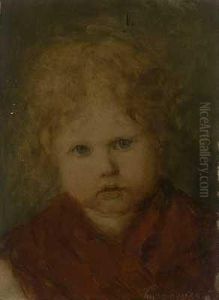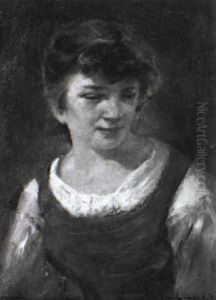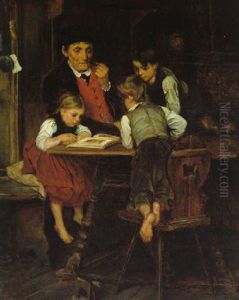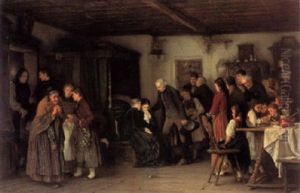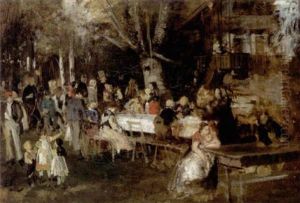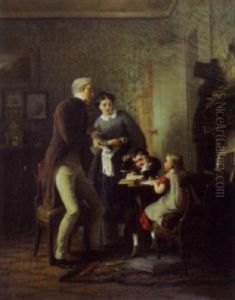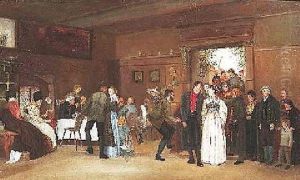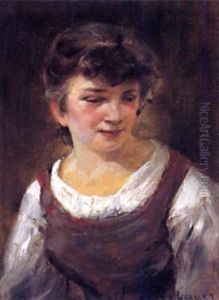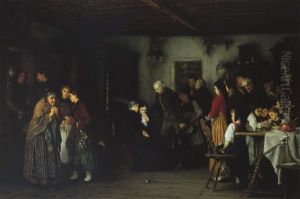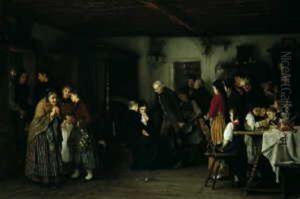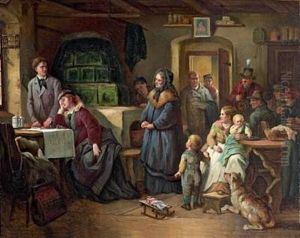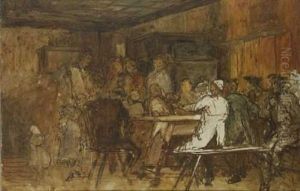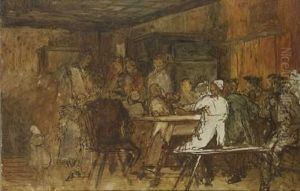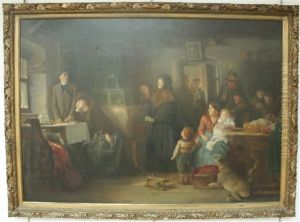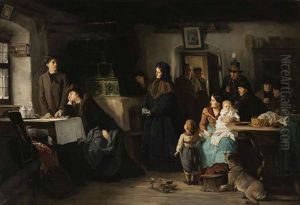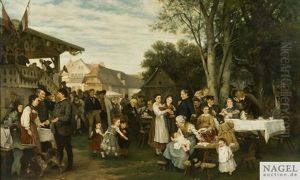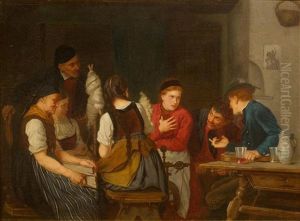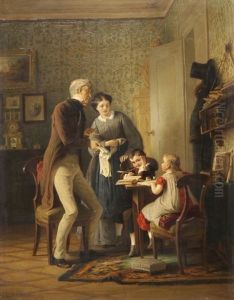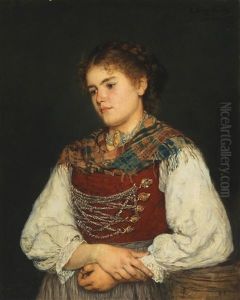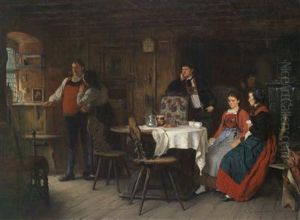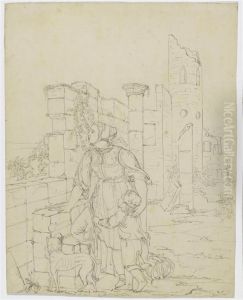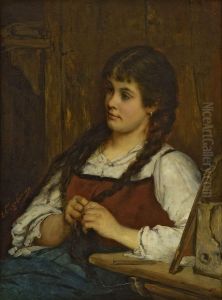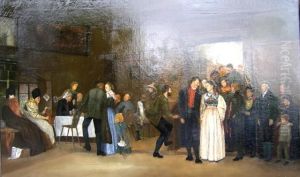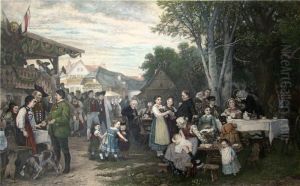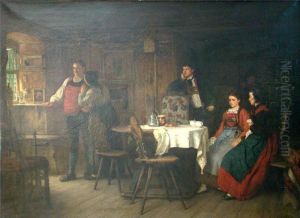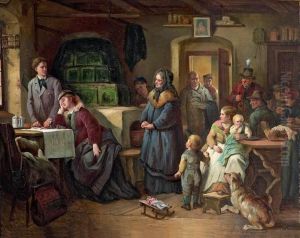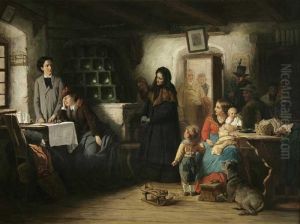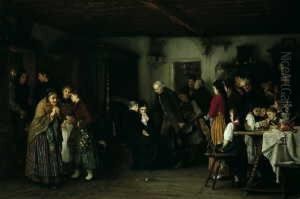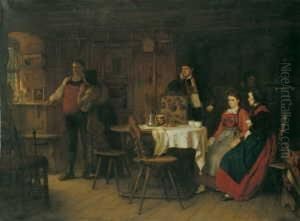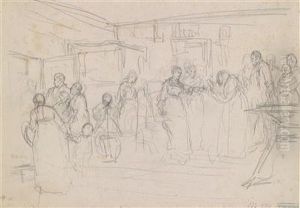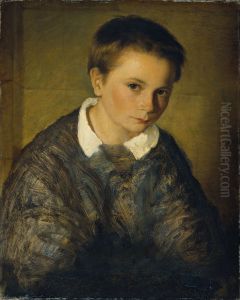Eduard Kurzbauer Paintings
Eduard Kurzbauer was a notable Austrian painter, whose body of work is often associated with the genre painting tradition of the 19th century. Born on November 14, 1840, in Vienna, Austria, Kurzbauer grew up in an era that was rich in cultural and artistic ferment. His early life was marked by a deep engagement with the arts, influenced by the vibrant artistic scene of Vienna, which was then a leading center of European culture.
Kurzbauer received his formal art education at the Academy of Fine Arts Vienna, where he studied under the guidance of prominent artists of the time. His education was foundational in developing his skills in genre painting, a style that focuses on scenes of everyday life. Kurzbauer's work is characterized by a keen observation of social interactions and a meticulous attention to detail, attributes that were well cultivated during his academic training.
Throughout his career, Kurzbauer was known for his ability to capture the nuances of human expressions and the intricacies of social customs. His paintings often depicted scenes from rural and urban life, showcasing his versatility in handling different subjects. Despite his remarkable talent, Kurzbauer's career was relatively short-lived; he died at the young age of 38 on January 16, 1879, in Munich, Germany.
Kurzbauer's legacy is that of a talented genre painter who managed to encapsulate the essence of 19th-century life in his works. His paintings remain a valuable part of Austrian art history, reflecting the social dynamics and cultural mores of his time. Although he did not achieve widespread fame during his lifetime, posthumous recognition of his work has grown, and he is now appreciated for his contributions to the genre painting tradition. Kurzbauer's art continues to be studied and admired for its historical significance and its meticulous portrayal of the human condition.
